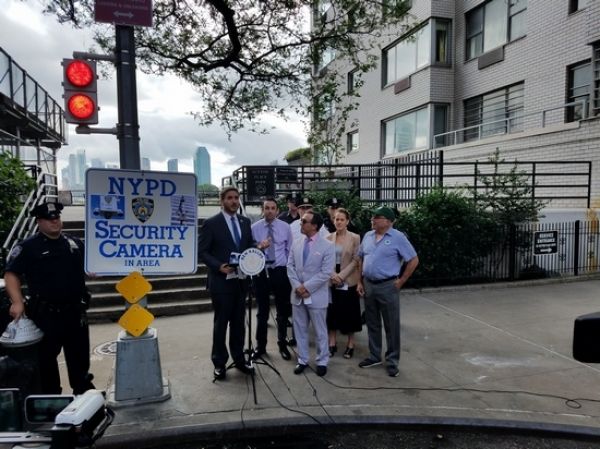All of this is playing out on the Upper East Side, where social-service groups and community-based nonprofits, churches and synagogues, block associations and community boards, and civic, faith and elected leaders — not to mention a perplexed citizenry — are grappling with the homeless issue. And mulling a basic question: To give or not to give?
Those ruminations, like so much else today, burst into public view with a tweet.
The scene was the Archdiocesan Cathedral of the Holy Trinity, at 337 East 74th Street, on the evening of October 16th, where the East 72nd Street Neighborhood Association was holding a public meeting, and City Council Member Ben Kallos was discussing the homeless problem.
That night, says Tina Larsson, the group’s secretary-treasurer, she tweeted a message that emerged from his presentation, and shortly after, Kallos, who represents the Upper East Side and Midtown East, retweeted it.
“Don’t give money to the homeless in our neighborhood,” she wrote. “Donate to the faith-based institutions that help them instead.”
The sharp surge in the homeless presence locally has been disturbing to residents, Larsson says. She notes a small square at 75th Street on the west side of First Avenue near the Saratoga apartment building as one problem spot.
And she cited a local nuisance known as the “Spitting Lady of 77th Street,” a longtime fixture on Third Avenue who cursed, screamed and spat upon people, often children. The woman became the focus of a Facebook page, and an online petition to de Blasio demanding her removal that garnered 1,500 signatures. She hasn’t been spotted since May.
Handouts to people like that encourage their behavior, increase the volume of solicitations and fuel dependency, the argument goes. “If you keep giving them money, they’ll keep staying here,” Larsson said.
Kallos say his constituents are deeply compassionate. “And when they see someone on the street, many people give from the bottom of their hearts,” he says. “The problem is for everyone else in the neighborhood who don’t want to see panhandlers, those who give are literally paying them to be there.”
He regularly addresses groups of as many as 100 residents in their buildings, asking for a show of hands of those who give cash to street beggars. Typically, some 10 percent of attendees raise their hands, and Kallos will implore, “Please stop doing that. You are paying them to stay there.”
Offering money can also discourage the needy from accepting tax-supported city services that could get them off the streets, he argues.
The alternative? “If you want to help someone on the street, call 311,” Kallos urges, saying a call can open the door to city shelter, three square meals a day, substance abuse programs, job training, even money to help pay the rent.



